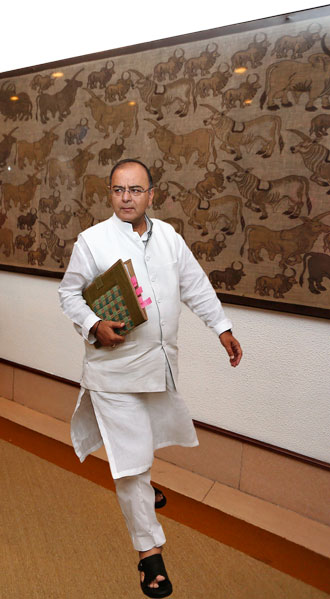In 1936, a British economist called John Maynard Keynes wrote the most influential book of the 20th century. In it he said that when the level of economic activity in a country falls, the government of that country must spend more to raise it.

After the Second World War ended in 1945, this became the equivalent of the Mrityunjaya mantra for governments. Devout Hindus believe that this mantra allows you to conquer death.
But there was a problem: in order to spend more, governments need money. They can get it either by increasing taxes or borrowing — or both.
In India, after 1957, the government started increasing taxes so that by 1972 the tax rate for the rich was 97 per cent. The folly of this was realised when tax evasion and black money proliferated.
So after 1985 there was a gradual reduction in income taxes, and in 1997 they reached the current levels of 30, 20 and 10 per cent. To make up for the loss of revenue, there was a gradual increase in other taxes.

But that was not enough and the government started borrowing more heavily from 1986 onwards. By 2014, it had borrowed so much that nearly a quarter of its annual revenue was being spent on paying for past debt.
Simultaneously, for political reasons, it had also been spending on the wrong things: salaries, pensions for its employees and subsidies in the name of the poor which actually went to the well-off and the rich.
Overall, the result today is that out of every Rs 100 that the government receives, it spends around Rs 65 on salaries, pensions, subsidies and interest on past debt. This means it has only about Rs 35 left to spend on development which is clearly not enough.
This is not what Keynes had meant anyway. He hadn’t wanted the government to become the prime mover of the economy. Is it any wonder then that development has been so slow in our country?
Budget 2017–18
It is in this overall context that the Finance Minister, Arun Jaitley, presented his third Budget on February 1. Like any middle class householder, his hands are tied because of expenditures undertaken by the UPA government in the ten years that it was in power.
That is why the Budget has not done much, which is actually a good thing because if Modi and Jaitley thought the way the UPA did, a lot of harm could have resulted by way of higher taxes and greater government expenditure.
Instead, he has left the taxation side well alone and tried to reduce expenditure. He needs to be commended for this.
The government also needs to be congratulated for the initiative on election funding. It has proposed election bonds which can be purchased by donors. The donors will then hand over these bearer bonds to the political party of their choice which will redeem them from a designated bank.
The proposal has been criticised for not going far enough. But it is at least a departure from cash funding of political parties.
The move towards greater digitisation — payments above Rs 3 lakhs will not be allowed in cash henceforth — is also a very good move. It will help reduce black money in the system.
Where the government has failed is in doing something to help the sinking public sector banks. They are in deep trouble because of loans that are not getting repaid. The impression has therefore gained ground that the government simply doesn’t know how to tackle the problem.
For the rest, it was a very ordinary budget. But thank god it didn’t do any harm.





